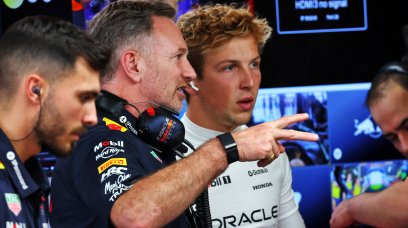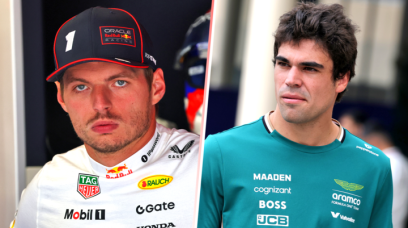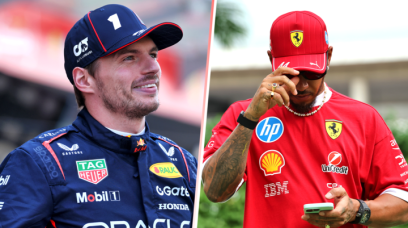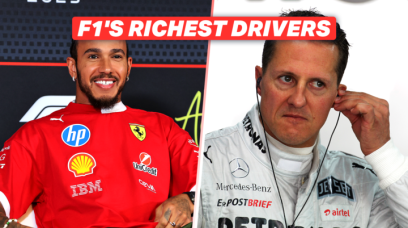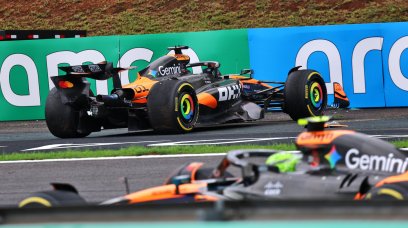Mercedes' struggles under Formula 1's newest set of technical regulations have facilitated change in its ranks. James Allison and Mike Elliott have swapped roles ahead of the Azerbaijan Grand Prix with the former returning as Technical Director just 20 months after handing over the baton to the latter to become Chief Technical Officer. So what has led to the switch, why can Allison turn the ship around and what difference will the changes make?
Tumultuous 20 months for Elliott
When the transition was made from Allison to Elliott as Technical Director midway through the 2021 season, nobody could have predicted the situation the Brackley-based outfit has landed in. The unprecedented dominance between 2014 and 2021 was ended convincingly last year when Red Bull stormed to a Championship double, finishing 205 points ahead of second-placed Ferrari. The disappointment for Mercedes would have come from being uncompetitive for the majority of the year. A daring aerodynamic concept, with the 'zeropod' vastly different from any other car on the grid was a hero-or-zero risk. Work well and no doubt others would have rushed to replicate the design for the new term. But in reality, the working window for the W13 was minuscule and led to a number of set-up headaches. The inability to get on top of porpoising issues plagued the quest for improvement and whilst improved performances came at Hungary and Zandvoort, it took a large upgrade package in the final five races for Lewis Hamilton and George Russell to threaten the RB18. A victory eventually came in Sao Paulo to spark optimism that 2023 could bring competitive results. But fast-forward to the first race of the season in Bahrain and the gap had increased, not shortened. Hamilton finished fifth with the W14 the fourth-fastest car on track, alarmingly slower than the Aston Martin of Fernando Alonso and 51 seconds behind race winner Max Verstappen. Small improvements have been made, notably in Australia where Russell led after the first lap and Hamilton finished second, but the margin to Red Bull remains sizeable. Despite there being time last season to analyse the W13's shortcomings and decide on a change of development route, it has taken a slow start to the new campaign to trigger alterations - Mercedes promising "visible change" from an upgrade package at the Emilia Romagna Grand Prix. Elliott's switch of roles with Allison has apparently been made through self-evaluation, but if struggles continued the change may have been forced upon him by the Mercedes hierarchy.
What will Allison bring?
Allison has been involved with some of the most successful F1 teams in the modern era, working for Benetton in the 1990s before switching to Ferrari in 2000 and being a part of the all-dominant Michael Schumacher era. He then moved to Renault where he was involved in Fernando Alonso's two title triumphs, but his time at Mercedes came in 2017. Whilst the Silver Arrows had already been successful since 2014, Allison oversaw what was one of the greatest engineering feats in F1 history with the W11, which conquered all in 2020, winning 13 of 17 races in the Covid-hit campaign. Compare Hamilton's comments on that car to the W14 and the difference is clear. The seven-time champion labelled the W11 a "masterpiece", whereas the current machinery has come under fire since making its on-track debut at the Bahrain pre-season test. Not only would Allison's technical nouse help boost Mercedes' development prospects, but maybe the trust from drivers - in particular Hamilton - could prove a more valuable asset.
What changes mean for Mercedes
It is important to point out that the swap will have next to no impact on Mercedes in the short-term. The development path will be largely set in stone for the season, especially with the upgrade package being taken to Imola. Allison could influence some of the later update packages if tweaks needed to be made, but the focus will no doubt be on the design and development of the 2024 machinery. If Mercedes can return to form early next season with a car that shows good correlation from CFD and wind tunnel testing to track and the team can dial in the perfect set-ups week-in, week-out, then the chance to challenge Red Bull for titles will be presented. That will be why the switch has been made at this stage. Despite being early in the year, development on next year's challenger will begin fervently in the coming weeks and months, if it is not underway already. Any success will likely be taken into 2025 and then F1's new power unit regulations come into force. With Red Bull set to use its own power from that season, an opportunity to consolidate position at the top would likely present itself. Elliott is still involved, of course, as CTO, so the personnel remains the same. But different approaches in each role could be what Mercedes needs to galvanise its charge to the top.
Most read

